At this technological revolution level stands the gummy industry. Advances...
Read MoreDiscover the Secret to Fluffy 4 Ingredients Basic Biscuits


Most baking recipes have the incredible power of being satisfying for something simple, fast, and truly irresistible. This is precisely what you get with classic 4-ingredient biscuits! Whether you are a baking beginner or just searching for a tried-and-true recipe, the following guide will give you the secret to baking biscuits that are golden on the outside, soft on the inside, and filled with homemade delight. With just a few pantry staples, you can quickly have a batch of these melt-in-your-mouth biscuits ready. Keep reading to find all the tips and tricks that will engrave this biscuit recipe right into your kitchen– this biscuit recipe is one you don’t want to pass on!
What is the Best 4-Ingredient Biscuit Recipe?

How to Prepare the Dough for Basic Biscuits?
Making dough for basic biscuits is an uncomplicated procedure that requires only four simple ingredients. First, in a large bowl, combine 2 cups of all-purpose flour, one tablespoon of baking powder, one teaspoon of salt, and 1/2 cup of cold unsalted butter. Cold butter achieves a good texture, so flaky, tender layers can form, making the biscuits very difficult to resist.
With a pastry cutter or your fingers, quickly rub the butter into the dry ingredients until the mixture looks like coarse crumbs. Do not overwork the mixture; this is important for the texture of the biscuits. Gradually stir in the 3/4 cup of cold milk with a fork. When the dough is drying out a little too much, add an additional tablespoon of milk at a time, but do watch not to make it too wet or sticky.
Handling the dough lightly and keeping everything cold is the perfect way to guarantee tender, flaky biscuits every time. Do not miss any of these small yet key steps that make a difference!
What Ingredients Do You Need for Quick and Easy Biscuits?
Simple, pantry ingredients are all you need to bake delightful biscuits. Here is a list of what you will require:
2 cups of all-purpose flour: All-purpose flour is your biscuits’ main component and structure. Choose unbleached flour for a more natural taste.
1 tablespoon of baking powder: This is your leavening agent, working to make your biscuits soft and fluffy.
1/2 teaspoon of baking soda (optional): This helps further rise in the presence of an acid, like buttermilk.
1/2 teaspoon of salt: Complements all other flavors and accentuates the buttery notes.
6 tablespoons of cold unsalted butter: If you want flaky layers, cold butter is your best friend. During baking, pockets of steam will be created. You can replace this with shortening if you wish.
3/4 cup of cold milk or buttermilk: Provides moisture for the dough with just a slight tang when buttermilk is chosen.
Have fun with your biscuit dough by incorporating some shredded cheese, herbs, or maybe just a little sugar for sweet biscuits. With a good stock of these simple essentials, it takes a few moments to whip up a fresh, warm batch of biscuits!
How to Use Buttermilk in Your Biscuit Recipe?
Buttermilk is one ingredient that can significantly enhance the flavor and texture of any biscuit. It’s natural acidity reacts with your leaveners, such as baking soda or powder, to produce carbon dioxide bubbles that raise your dough, making the biscuits light and fluffy. To utilize buttermilk properly, ensure it is cold when added to the dry ingredients. In contrast, the dough’s cold fat (whether butter or shortening) needs to stay cold so those flaky layers form.
The buttermilk should be stirred into the dry ingredients quickly and gently, as overmixing could develop too much gluten, resulting in dense biscuits. The rule of thumb: mix until the dough comes together, regardless of whether the dough looks a bit shaggy. You can substitute 1 cup of buttermilk with milk and one tablespoon of vinegar or lemon juice, then allow 5 to 10 minutes for it to curdle. However, fresh buttermilk has a pronounced tangy flavor and is the best riser.
How Do You Make Homemade Drop Biscuits?
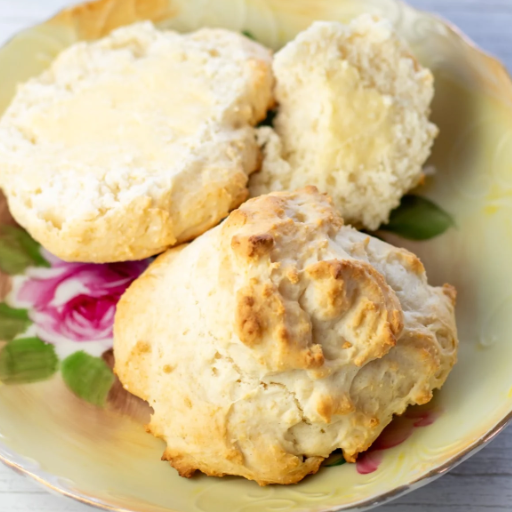
What Techniques Ensure Fluffy Drop Biscuits?
This recipe requires a certain degree of technique and fine ingredients to melt into a soft, fluffy biscuit. First and foremost, cold ingredients are essential. Avoid any warm ingredients! The warmer the fat is, the more it melts and mixes with the flour, making it harder for the biscuit to become flaky and tender. A trick to keep butter cold is to place it in the freezer for a short while and then directly grate it into the flour mixture to distribute it evenly. Never overwork the dough; this stops gluten from developing, which would make the biscuit tough and dense. Mix only until carefully combined; in fact, a little shaggy is much better for the light, airy nature of the biscuits.
Both baking powder alone and baking soda can help raise the biscuits. Check for freshness, as expired ones will not contribute much to rising. Similarly, these appropriate ratios of liquid and dry ingredients are essential. More liquid makes the dough heavier, while too little will dry the crumbs. Aim for a moist dough that is slightly sticky to the touch, just enough to pull together and retain its shape, so it stays fluffy when baked.
The other important thing is to bake it at a really high temperature (generally about 425°F/220°C) for a short period so that the rise occurs quickly and a golden crust develops. Set it off on a sturdy baking sheet lined with parchment paper, making sure the biscuits are far enough apart for the hot air to circulate. Employ these tricks, and you can enjoy melting-in-your-mouth fluffy-drop biscuits every time.
How to Incorporate Dry Ingredients into the Biscuit Dough?
Adding dry ingredients to biscuit dough is an exercise in concentration and technique to achieve the perfect texture. Begin by thoroughly whisking all the dry ingredients—usually flour, baking powder, salt, and sugar—in a large mixing bowl. This ensures even distribution of the leavening agents so the biscuits can rise evenly during baking. Never press the flour into the measuring cup; lightly scoop it in and level it off with a knife.
Next, add the cold butter cubes to the dry mix. Work it with a pastry cutter or your fingertips until the flour appears coarse and crumbly. The distribution of this butter is crucial for that cakey flakiness. Once the dough is ready, fold briefly and gently with the wet ingredients, not more than six times to avoid tough biscuits. The recipe should be prepared for formation into biscuits that rise tender and flavorful upon baking.
Can You Use Self-Raising Flour to Make Biscuits?
Self-raising flour can be used to make biscuits. Generally, for recipes where leavening is involved, self-raising flour is considered to lessen a few steps, although in certain respects, it may just be considered a shortcut. Since it contains baking powder and salt, it saves bakers the trouble of weighing and mixing these components separately- a good time-saver and assurance of consistent results. The balance of leavening in self-raising flour is especially outstanding for fluffy and tender biscuits. However, you must weigh other recipe options, like recipes that call for all-purpose flour and require the additional baking powder or alternative leavening agents, should you occasionally opt for self-raising flour.
Remember that leavening power might vary slightly depending on brand or specific recipe requirements when using self-raising flour. Where such Leavening agents as baking powder or salt appear in the recipe, just leave them out, or reduce the quantities so that you will not end up with overly salty or, worst still, bitter biscuits. Likewise, you might have to change the ratios of wet to dry ingredients slightly to have a dough with the right consistency. Despite all these slight variables, self-raising flour is mainly considered the quickest and easiest way to make good and consistent fluffy biscuits anytime, thus saving a big chunk of time, whether by the amateur or the pro.
What Are the Steps to Bake Perfect 4-Ingredient Biscuits?
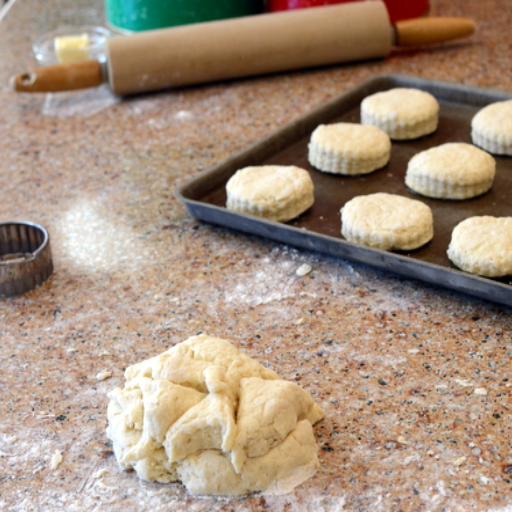
How do you preheat the oven to bake biscuits?
This is one of the most crucial steps, regardless of the biscuit type: it guarantees an even baking of the biscuits and their winning texture. Slightly confusing, the recipe will usually state a temperature at which you work, your average temperature being around 425° (F) or 220° (220°C. Depending on your oven’s make, reaching the required temperature may take 10-20 minutes. Nowadays, preheating is usually indicated by a light source coming on or a beep from the oven. Account for that time during your preparations to avoid being held back when the baking starts.
You may want to put the rack in its position while waiting for the oven to preheat, which should generally be the center rack for consistent heat distribution. With the rack in its middle position, your biscuits will bake in an evenly heated environment with free circulation of warmth above and below the baking sheet. Opening the oven door repeatedly during preheating should be resisted, as this causes the oven to lose heat and results in a longer time to preheat. If you have an older oven or one prone to uneven heating, an oven thermometer will help ensure that the inside temperature corresponds to what you dialed in. This minute adjustment will make your baking environment dependable and guarantee that your biscuits are always light and fluffy.
Once preheated, your oven becomes a perfect baking environment. The baking powder or self-raising flour in the biscuits can quickly react to the heat stress, leavening the biscuits by releasing carbon dioxide to rise, thus rendering them flaky. This recipe step makes all the difference between the biscuits’ hopeful starting point and their wonderfully finished status.
What Temperature Should You Bake Biscuits For Optimal Fluffiness?
The fluffy biscuits with which dreams are made, the typical range of temperature used in baking is 425°F-450°F (218°C-232°C). This very high temperature is essential for a perfect yield, as it can melt the butter of the dough almost instantly, producing steam pockets responsible for a light and airy texture inside the biscuit. The steam may not form fast enough at a lower temperature, producing dense biscuits that will not rise well.
Time is also essential. At 425°F, the biscuits usually bake for approximately 12-15 minutes until fully cooked, with extra time depending on the size and thickness of the biscuit. They are to be watched particularly toward the end so they don’t get too brown, as then they might get dry. Always use an oven thermometer to check if your oven is heating properly, as any slight deviation can change the results.
Also, never put the biscuits in the oven without preheating. Giving them a place inside a preheated oven ensures that they bake evenly from start to finish, allowing the dough to rise uniformly. Hence, biscuits should be fluffy, with precise temperature and time manipulation, working alongside careful handling of your ingredients.
How Do You Know When Biscuits Are Golden Brown?
Biscuits are in a state of perfection when their color is a subtle interaction of observation and sensory perception. The tops of the biscuits should have a warm, golden color, not too pale nor browned. The edges will slightly darken before the tops, giving subtle progress indicators. A fair, lightly caramelized tone on the underside will signify an even bake. In contrast, if the bottoms are dark or look burnt, the biscuits may have been overbaked or baked unevenly.
When it comes to texture, the story of a biscuit unfolds further. A well-baked biscuit offers firm resistance under gentle pressure with slight give, indicating the inside has been baked evenly. If lightly pressing against a biscuit makes it feel doughy, then more baking is needed. And then come the smells: the smell of breaking butter, buttery leanings, slight toastiness—all these serve as cues that your biscuits are almost there.
To be precise, some bakers rely on internal temperature tests. A biscuit reaches an appropriate bake when the internal temperature hits about 200°F to 210°F. With a quick test using a food thermometer, you can guarantee the biscuit is appropriately baked. Still, home bakers well-grounded in the craft can do away with the thermometer and perform tests alone through sight and sensory experience. Watching for these subtle nuances ensures that you…
What Tips Can Help You Achieve Flaky and Buttery Biscuits?
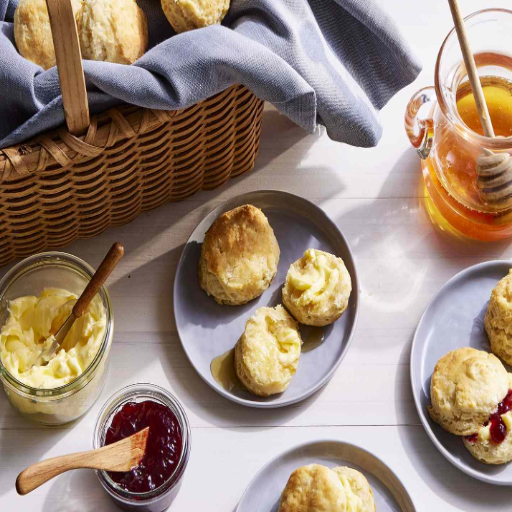
How to Properly Cut Butter into the Flour Mixture?
Butter and flour make perfect flaky biscuits when treated right. The butter must be cold at all costs. Applying warmth to the butter creates layers with flour that are needed for the flaky texture. Cut the butter into small cubes or grate it with a box grater before adding it to the flour mix. Cut the butter into the flour using a pastry cutter, two forks, or your hands until the mixture looks like coarse crumbs. Avoid overworking it; one needs chunks of butter here and there so that molten butter creates steam to lift formed layers in baking. Keep tools and ingredients cold for best results, especially when working in warmer climates, to prevent premature melting of the butter. This technique helps the biscuit remain light and airy.
What Role Does Room Temperature Play in Biscuit Making?
The concept of room temperature in biscuit making is crucial, as the feel and rise of biscuits depend directly on it. For example, how butter gels with miscellaneous ingredients during mixing and baking depends on the room temperature. If it’s warmer, the butter might melt before putting the dough in the oven, resulting in a denser and greasier cookie. On the contrary, if too cold, the dough might harden beyond being mixed, with the consequence of obstructing layer formation. Keeping a moderate and consistent temperature in your kitchen will contribute joy to the dough, and insofar as the butter must be solid, it provides water vapor from the pockets during baking that leads to light layers with a hint of flakiness.
And by the way, room temperature also interferes with how much flour can take in liquid. Biscuits require just the right amount of hydration to get the exact consistency. When it’s warm and dry, flour doesn’t seem to take in much liquid, resulting in dry dough. High moisture levels in the air can give a flour that absorbs lots of liquid or even sticky dough. With this understanding of how some environmental factors operate, the baker adjusts accordingly by slightly increasing or decreasing the amount of liquid to keep his dough well balanced.
Accounting for nanosecond changes in room temperature during biscuit making allows the baker to enjoy predictable results in the dough, thus promising the best biscuit texture: tender, flaky, and rising well.
How to Store Biscuits in an Airtight Container?
Improper biscuit storage compromises their freshness, texture, and flavor. First, ensure that the biscuits are entirely cooled to room temperature before storing- tapping in heat can create condensation and may lead to sogginess. Use a top-loaded plastic, glass, or metal air-tight container; alternatively, leave the biscuits exposed, covered with a clean kitchen towel. Place parchment paper at the bottom of the container to absorb moisture—place layers of parchment paper between stacked biscuits to keep them from clinging.
Then, keep the container in a cool, dry place, away from sunlight or heat. Such factors compromise biscuit quality. At room temperature, they will remain fresh up to two days, after which they need to be refrigerated for up to one week to maintain freshness. Freeze them for 2-3 months for even better quality. To enjoy frozen biscuits, heat them in the oven to restore warmth.
Why Are 4-Ingredient Biscuits the Best Choice for Beginners?

What Makes a Biscuit Recipe Easy to Follow?
From my perspective, a simple biscuit recipe mixes simplicity with explicit instructions. It begins with a short list of easily obtained ingredients—such as in a four-ingredient biscuit recipe—which saves the cook from troublesome grocery shopping. Fewer ingredients suggest less time for preparation and a lesser chance of making a mistake; hence, this kind of recipe is best at the very beginning stage for any beginner to try. Also, with only four constituents, it becomes easier to understand how every ingredient contributes to the biscuits’ texture, taste, and structure.
Another vital point is the clarity of the directions given in the recipe. Step-by-step instructions with no unnecessary technical jargon make it possible for even an amateur baker to stick with it without confusion. Simple and clear instructions like “mix until just combined” help avoid overmixing that would ruin the biscuits, so they are a worthwhile investment of time. Descriptions based on visual or tactile cues are also precious, for example, indicating how the dough should appear or feel to increase my confidence that I’m on the right path. Therefore, a simple recipe goes beyond just saving time; it helps in learning the basics of baking, as well as making it enjoyable and stress-free.
The best recipes allow some room for trial and error without being overwhelming. When I have fewer variables, I can tweak aspects like bake time or try out several types of flour to understand how these changes affect the end product. This gives me a sense of ease in my experiments and success, warming me up along with my learning process. On these foundations lies the architecture of why a recipe such as this four-ingredient biscuit recipe becomes an ultimate tool for learning while ending with a satisfying result.
How Can You Simplify the Biscuit-Making Process?
Another one of my first steps for making less of the biscuit-making process is preparation and organization. That’s to say, before starting, I usually want to make sure everything has been measured and ready. Working without stopping mid-recipe to hunt for something makes for efficient work. I try to use the least number of tools or utensils since fewer cleaning would allow the process to stay simple. One thing I do so that in this way, it feels less overwhelming and more manageable is to combine ingredients within the same mixing bowl as much as possible instead of having separate ones.
The other simplification I yield is to stick with a tried-and-true recipe, preferably one requiring as few ingredients as possible. Simplifying ingredients means simpler opportunities for error, so I focus on working with the technique rather than juggling the many steps. Ingredients kept at home, such as flour, butter, milk, and baking powder, are best for such recipes. I also believe mastering basic techniques, such as folding the dough gently just enough without overworking it, spells magic for my biscuits with little effort. It is so simple and stress-free, making biscuits enjoyable and rewarding.
What Are the Advantages of Using Fewer Ingredients?
By far, the biggest advantage of using fewer ingredients is the simplicity it imparts to the whole process, making it far less daunting for beginners. A shorter list of ingredients means I can put my undivided attention on perfecting the core techniques instead of dividing my attention between the many complexities of ingredients. Fewer ingredients also allow me to appreciate the natural flavors of each ingredient, as they tend to shine even brighter without additional embellishments. There is something satisfying about making delicious food without an exaggerated list of items.
Plus, fewer ingredients can equate to less cost and greater convenience. For most dishes, I tend to gravitate towards using pantry staples or items I already have, so it cuts down on store visits and wastage. Moreover, these dishes are usually quicker to prepare since they require less measuring, chopping, or mixing. On hectic days, this becomes valuable when I want to eat something homemade without spending hours cooking. Simple is usually better, and simpler cooking yields better results- a joy to cook.
Reference Sources
- The BEST & EASIEST 4-Ingredient Biscuit Recipe
- Homemade Biscuits Using Only 4 Ingredients
- Loretta Lynn’s 4-Ingredient Buttermilk Biscuits
- Secret to Fluffy Biscuits (Reddit Discussion)
- Light and Fluffy Biscuits Recipe
Frequently Asked Questions (FAQs)
1. What are the four ingredients in basic biscuits?
Basic biscuits typically include flour, butter, milk (or liquid), and baking powder as the leavening agent. The mingling of these simple ingredients results in a soft and fluffy biscuit that requires the least effort to make.
2. Can I exchange the ingredients while following a basic biscuit recipe?
Yes, ingredients can be substituted depending on preferences or available ingredients. For example, in a vegan version, butter and milk can be replaced by any butter or milk substitute. Whole wheat flour can hence replace all-purpose flour, although this will undoubtedly affect the feel of the biscuit.
3. How must I measure the ingredients for the best results?
Accurate measurements convert the production of a recipe into a science, seamless from batch to batch. A kitchen scale can be very precise in measuring flour. If measuring by volume, spoon flour lightly into the cup and level it off; do not pack it down. Use liquid measuring cups for wet ingredients to avoid common errors.
4. How long does it take to prepare 4-ingredient biscuits?
The prep time is often under 15 minutes. Mixing the ingredients, shaping the dough, and cutting biscuits are quick steps, making them a go-to recipe when you’re short on time. Baking usually takes 10-15 minutes, meaning freshly baked biscuits can be ready in under 30 minutes.
5. How can I make them flaky?
The secret is not to overwork your dough; your butter must be cold. As the butter melts in the heat of the oven, it releases steam that fluffs and separates the layers of dough, creating lovely flaky biscuits. Over-kneading will kill that.
6. How do I store biscuits if there are extra?
Yes. After cooling down completely, leftover biscuits can be stored in an airtight container at room temperature for up to 2 to 3 days. For longer storage, wrap them in a resealable freezer bag and reheat as needed for fresh-tasting biscuits.
Related Posts
- The Ultimate Guide to Choosing the Best Gummy Bear Machine
- Discover the Delightful World of Orange Boba: The Ultimate Bubble Tea Experience
- Gummy Machine
- Gourmet Gummy Candy in Novelty Shapes | Lolli and Pops – 3.6 oz Pack of 4
- CBZ50A Automatic Popping Boba&Crystal Boba Production Line
- Discover the Delicious World of Life Saver Gummies: A Wild Berry Adventure
- Do Gummy Bears Expire or Go Bad? Uncovering the Shelf Life and Freshness of Your Favorite Candy
- Exploring the World of Spicy Mango Candy: The Perfect Blend of Sweet and Spicy Delight
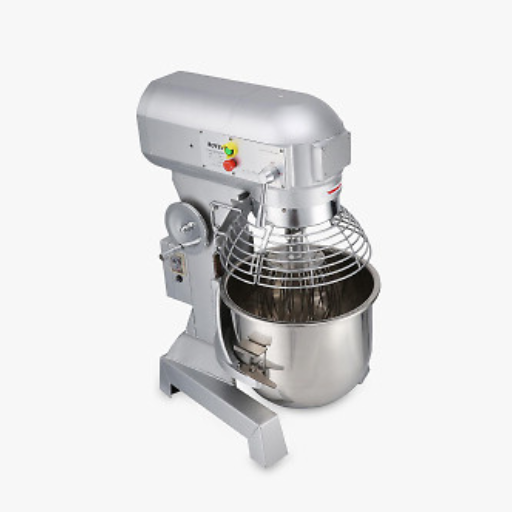
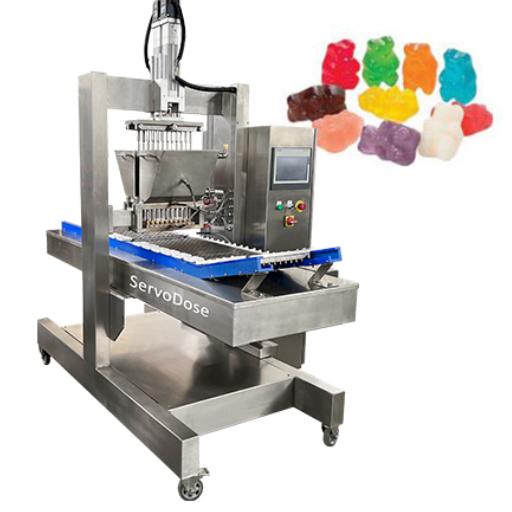
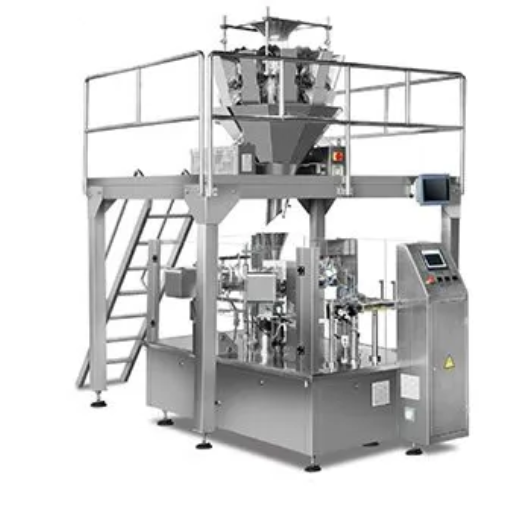
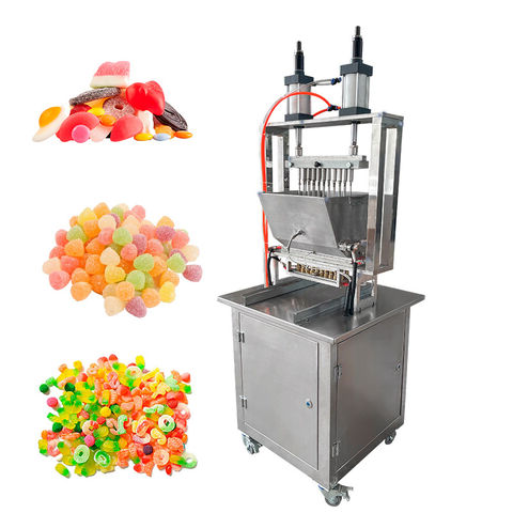
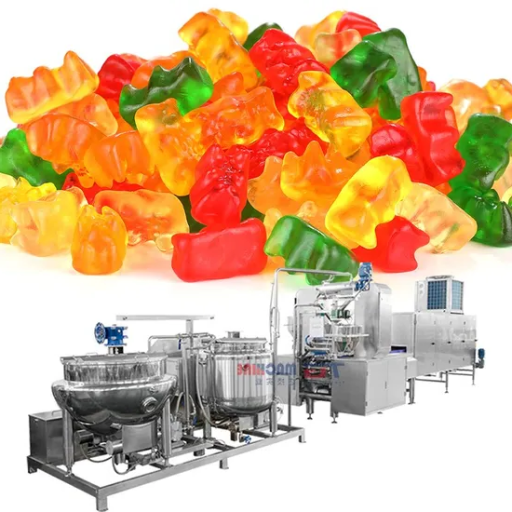
Blog Categories
Popular Blog Tags

Shanghai Fude Machinery Manufacturing Co., Ltd is a leading manufacturer of top-notch gummy and cookie making machines with more than 15 years’ experience in the industry. We provide creative equipment that ensures accuracy and speed while sharing intelligence with food producers. Shanghai Fude remains to be one of the most reliable companies for food machinery because of its dedication to perfection.




